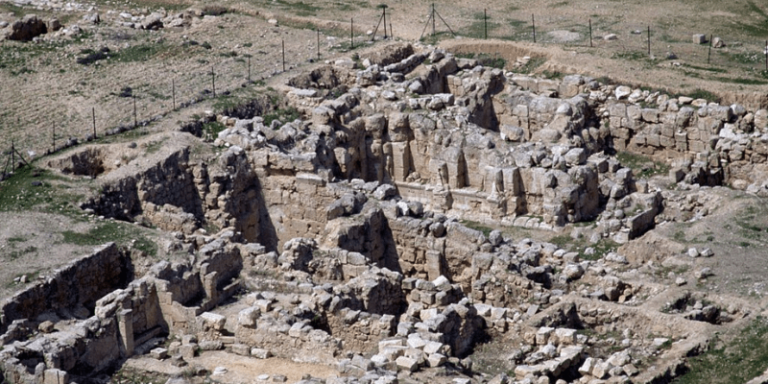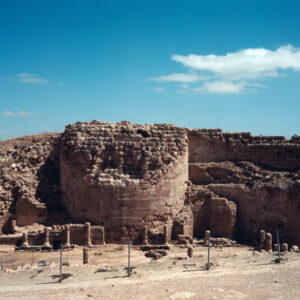The Herodium: Israel Opens Herod’s Palace
Herod is best known for his attempt to kill Jesus as a baby – but his great palace is his legacy to archaeologists.
By: Kelli Ballard | December 17, 2020 | 415 Words

View of the building complex and gardens of the Lower Herodium, Judea, Israel. (Photo by DeAgostini/Getty Images)
Just in time for Christmas, Israeli authorities are getting ready to open parts of King Herod the Great’s palace-fortress, Herodium, located in the Judaean Desert. For the first time, tourists will be able to visit parts of the more than 2,000-year-old palace, including the foyer and private theater.
King Herod was known for his brutality and fear of losing his throne. He was appointed by the Romans as king of the Jews and ruled for more than 30 years. When wise men arrived at Herod’s court asking where the king of the Jews was who had just been born, however, he became paranoid and afraid that the boy – Jesus – would take his kingdom. Herod told the wise men to report back to him when they found the boy, but they didn’t.
In a failed effort to get rid of Jesus as an infant, Herod ordered all male children two years of age and younger in and around Bethlehem to be killed. However, Joseph and Mary had been warned and fled to Egypt.
Herod is remembered as an evil king, but that wasn’t his only legacy. Archaeologists are fascinated with his great palace, the Herodium. The palace is located about six miles from Jerusalem and sits atop a cone-shaped mound in the desert.

(Photo by: Seidel/United Archives/Universal Images Group via Getty Images)
Researchers say there are four towers as well as frescoes, mosaic floors, corridors connected by archways, and even an aqueduct. Springs nearby were channeled in via the aqueduct, providing water for the gardens and an enormous pool. The public will be able to visit Herod’s royal hospitality room, which, according to Israel’s Nature and Parks Authority, was only available to “the king’s important guests.”
The foyer has striped frescoes in their original royal colors of auburn, green, and black. At the bottom of the stairs, on the other side of Herod’s grave, is the theater with around 300 seats as well as a private booth and royal visiting room. Archaeologists say the king gave orders to have the palace buried after his death. They were to use the ground from below the hill where it sat to cover it until it was no longer visible. The purpose for this was so that his grave would stand out, but it had the added bonus of preserving the structure. And now, people will be able to tour this bit of history.
















